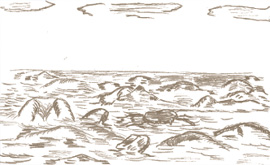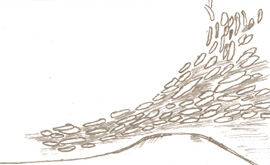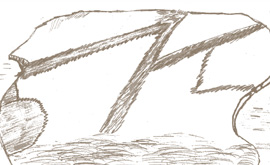Igor Krupnik
How many words for ice and snow can you think of?
Yupik-speaking Eskimos on St. Lawrence Island, Alaska, for example, have some 100 terms for sea ice and ice formations. But these terms only existed in the spoken language until local elder, Conrad Oozeva wrote them down in 1986 in his “sea ice dictionary” for use in Yupik language classes at local schools.
Recently, Igor Krupnik of the Smithsonian‘s Arctic Studies Center helped to rework Oozeva’s list into an illustrated dictionary with English translations. Krupnik explained, “Native experts . . . have a very coherent and ‘fully scientific’ vision of weather and ice regimes. There is a lot to learn from this unique knowledge of elders, by polar scientists and by younger Native generations alike.”
These illustrations are some examples of Yupik sea-ice terms with illustrations by Vadim Yenan.





